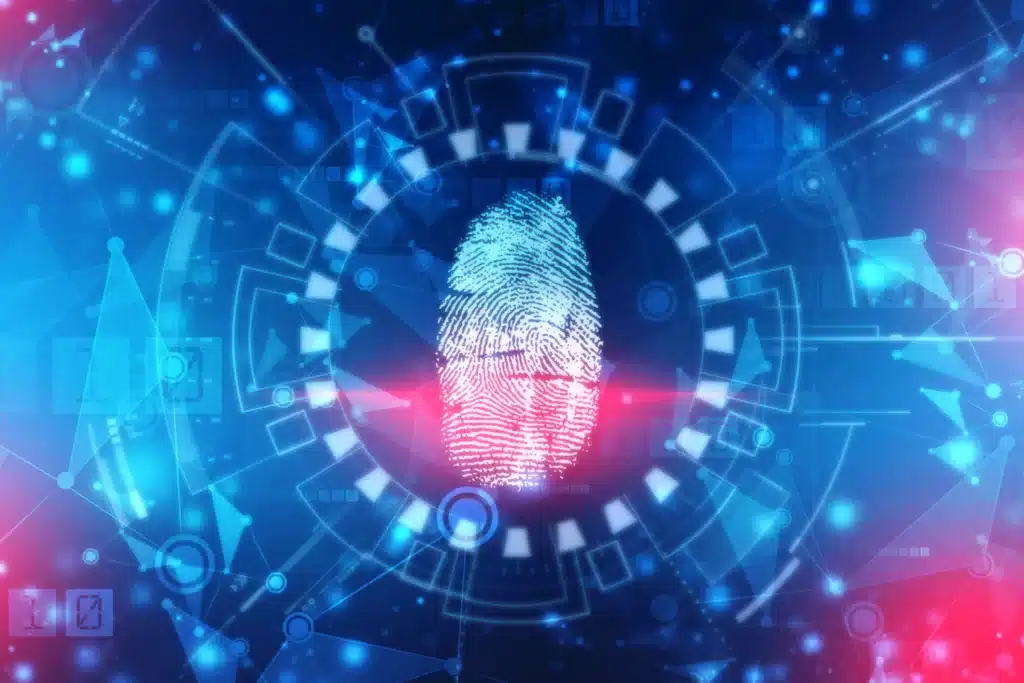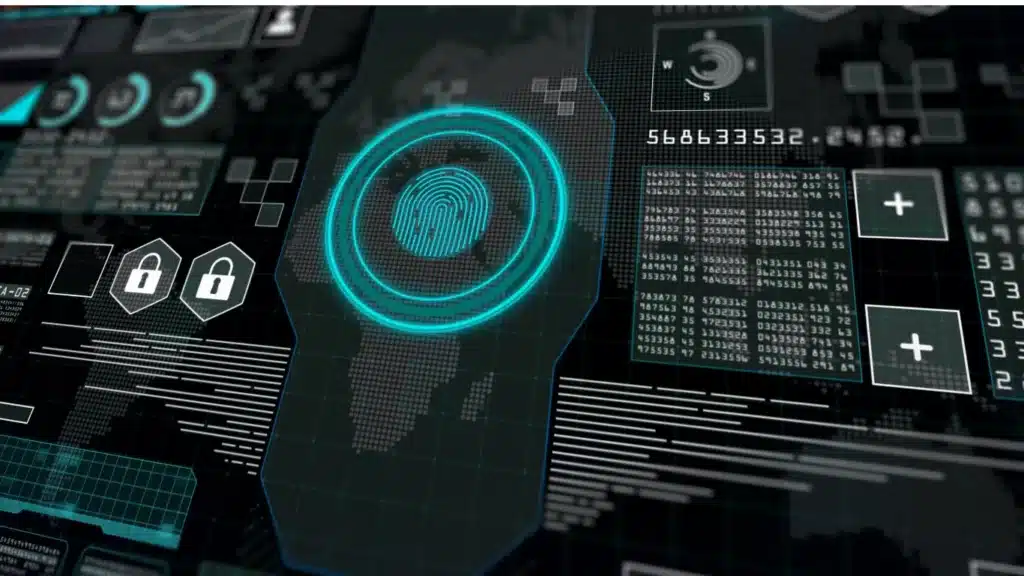Rise of Template based Fingerprint Authentication
In today’s fast advancing technology, the need for secure and efficient authentication methods has become more critical than ever. One of the latest trends in this field is the rise of template-based fingerprint authentication, which promises to transformed the way we access our devices, applications and information.
As the technology has advanced, this approach has become more affordable and accessible, leading to its rapid adoption in various industries and applications, including the Government, law enforcement and financial institutions.

What is fingerprint template?
A fingerprint template is a digital representation of the unique characteristics of an individual’s fingerprint. It is created through a process called fingerprint recognition or fingerprint authentication, where a person’s fingerprint is scanned and analyzed by a computer system. During the recognition process, the computer system identifies specific patterns and features of the fingerprint, such as the location of ridges, bifurcations and minutiae points.
Fingerprint authentication is not a new concept but in recent advancement in machine learning and Artificial Intelligence (AI) have made it possible to create highly accurate and reliable templates of fingerprints that can be used to authenticate users. This technology is already being used in a wide range of applications, from unlocking smartphones to accessing bank accounts and secure government facilities.
Usually, fingerprint authentication systems have depended on capturing and storing images of user’s fingerprints. But, in recent years, a new approach has emerged that uses mathematical algorithms to generate a unique digital signature based on the physical characteristics of a user’s fingerprint without storing any image data.
This new approach is known as “Template-based fingerprint authentication”. Instead of storing images of user’s fingerprints, the system captures the physical characteristics of the fingerprint and converts them into a mathematical template or code, then it is stored securely on the device or server and used to authenticate the user in future transactions.
One of the most popular forms of biometric authentication technology is fingerprint scanning. In this article, we will discuss the benefits and difficulties of using biometric authentication technology.
What are the benefits of Template based Authentication Technology:
- Improved Security: Biometric authentication technology is one of the most secure forms of authentication available. Usually, authentication methods like password and PIN codes are open to hacking, phishing and other forms of cyber attacks but biometric authentication technology uses physical characteristics that can not be replicated and making it much more difficult for cyber criminals to gain access to sensitive information.
- Increased Convenience: Biometric authentication technology is much more convenient than traditional authentication methods. With biometric authentication technology, users don’t need to remember passwords or carry around tokens of key cards, they only need is their unique physical characteristic, which is their fingerprint to authenticate their identity.
- Fast and Efficient: Biometric authentication technology is also fast and efficient compares to the traditional authentication methods, users need to enter their passwords or PIN codes manually, which can be time consuming. Biometric authentication technology scans an individual’s physical characteristic in seconds, allowing for a quick and efficient authentication process.
- Scalability: Biometric authentication technology is also highly scalable. Usually, authentication methods like passwords and PIN codes require a lot of infrastructure to manage, especially in a large organization. Biometric technology can be easily scaled up or down to fit the needs of any organizations.
What are the difficulties of Template based Authentication Technology:
- Privacy Concern: One of the biggest challenges of biometric authentication technology is privacy convers. Biometric data is highly personal and sensitive and there is a risk that it could be used for malicious purposes. In addition, biometric data is also subject to legal regulations, which could limit its use in certain situations.
- Price concern: Biometric authentication technology can also be costly to implement. Organizations need to purchase specialized equipment and software to support biometric authentication, which can be expensive. In addition, there are also ongoing maintenance costs associated with biometric authentication technology, such as software updates and hardware upgrades.
- Compatibility: Biometric authentication technology may not be compatible with all devices and systems. Older devices may not have the necessary hardware or software to support biometric authentication. Some systems may not be able to integrate with biometric authentication technology, making it difficult to implement in certain environments.
- False positive and False negatives: Biometric authentication technology is not accurate and there is a risk of false positives and false negatives. False positives occur when the system mistakenly identifies an individual as someone else, while false negatives occur when the system fails to identify and individual who is authorized to access the system. In both scenarios can lead to security breaches and other issues.
Biometric authentication technology is becoming increasingly popular as a way to improve security and convenience in authentication process. Fingerprints scanning, in particular has become a widely used form of biometric authentication technology.
As there are many advantages to biometric authentication technology, there are also challenges that need to be addressed, such as privacy concerns, cost, compatibility issues, false positives and false negatives.
As technology continues to evolve, we can expect to see further advancements in biometric authentication technology that will continue to improve security and convenience for individuals and organizations the same.
How safe is fingerprint authentication?

Fingerprints authentication is generally considered to be a secure form of biometric authentication, but is not accurate. While it is true that fingerprints are unique to each individual and difficult to replicate but there are still some potential security risks associated with this technology. There is a risk that fingerprints can be stolen or copied if proper security measures are not in place.
The level of security provided by fingerprint authentication depends on the specific implementation and the quality of the technology used. In general, finger authentication systems typically use multiple layers of security and encryption to protect the data.
Overall, fingerprint authentication is a reliable and convenient method of authentication, but like any other security system, it should be implemented with proper security protocols to minimize the risks of data breaches and cyber-attacks.
Which is safer, password or fingerprint?
When it comes to security, both password and fingerprint authentication have their strengths and weaknesses. In general, fingerprint authentication is considered to be a more secure form of authentication than passwords, but it also has some limitations.
Passwords are vulnerable to a range of security risks, such as brute-force attacks, phishing and social engineering. A weak or easily guessable password can be easily cracked by hackers, which can lead to unauthorized access to sensitive information. Even strong passwords can be compromised if they are stored insecurely or shared with others.
On the other hand, fingerprint authentication is generally considered to be more secure than passwords because it is based on unique physical characteristics that are difficult to replicate. Each person’s fingerprint is unique and it is virtually impossible for someone to duplicate another person.
What is the future of biometric authentication?
The future of biometric authentication looks promising as it offers several advantages over traditional authentication methods such as passwords, PINs and security tokens. Some of the potential developments in this field of biometric authentication are:
- Expansion of biometric methods: Presently the most common biometric methods are fingerprints, facial recognition and iris recognition. But there is increasing research into other biometric methods such as voice recognition, gait analysis and electroencephalogram patterns, which could potentially enhance the accuracy and security of biometric authentication.
- Integration with AI and machine learning: Artificial intelligence (AI) and machine learning algorithms can help improve the accuracy and efficiency of biometric authentication by continuously learning and adapting to user behavior.
- Multi-factor authentication: Biometric authentication can be combined with other authentication factors such as passwords or security tokens to provide and extra layer of security and making it harder for attackers to gain access.
- Potential applications of Biometric Authentication in different industries: Biometric authentication is already being used in various industries such as finance, healthcare and transportation. As the technology becomes more mature and reliable it is expected to see increased adoption in other industries such as retail and hospitality.
- Privacy concern: As with any technology that involves personal data, privacy concerns will need to be addressed to ensure that biometric data is protected and used only for its intended purpose.
Biometric authentication has the potential to become a mainstream method of authentication in the future, providing users with a seamless and secure way to access their digital account and physical spaces.
What is the use of fingerprint authentication in government and immigration process?
Fingerprint authentication is commonly used in government and immigration process as a means of identity verification. Fingerprinting has been a standard method for identifying individuals for over a century and with advances in technology, it has become a reliable and efficient means of identifying people. Here are the few examples:
- Border Control: Fingerprint authentication is used to verify the identity of individuals crossing international borders. Many countries require visitors to provide biometric data, such as fingerprints when entering the country. This helps border control officials to identity individuals who might present a threat to security or who have a criminal record.
- Passport Issuance: Many countries require fingerprints for passport issuance. This helps to prevent identity fraud and ensure that the passport is issued to the correct person.
- Criminal Background Checks: Fingerprint authentication is used in criminal background checks for employment and other purposes. This helps to ensure that individuals with criminal records do not get access to sensitive information.
- Immigration Application: Fingerprint authentication is required for certain types of immigration applications, for those applying for permanent residency or citizenship. This helps to verify the identity of the applicant and ensure that they are eligible for the status they are seeking for.
- Law Enforcement: Law enforcement agencies often use fingerprint authentication to identify suspects or match prints found at crime scenes. This can be a critical in solving crimes and bringing offender to justice.
Fingerprint authentication is a reliable and effective means of identity verification and its use in government and immigration processes helps to enhance security and prevent fraud.
1 thought on “Rise of Template based Fingerprint Authentication”